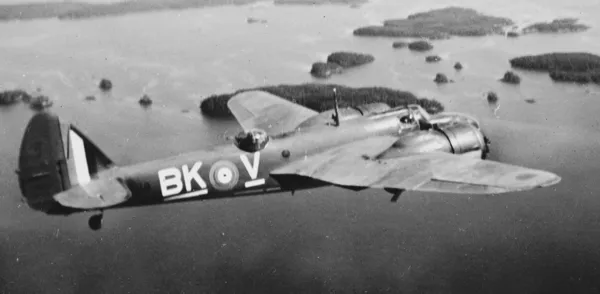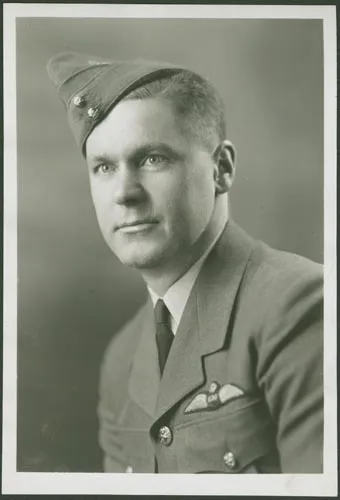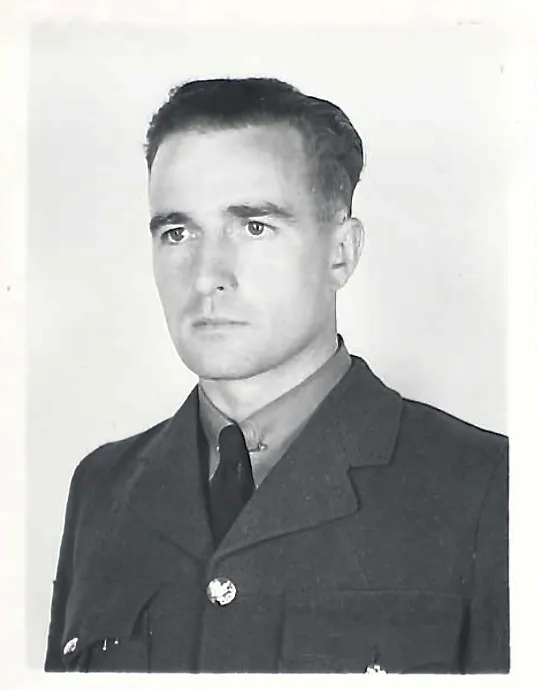Corbett, Vaughan Bowerman
Killed in Flying Accident 1945-02-20
Service
RCAF
Unit
7 OTU- Operational Training Unit (RAF)
Base
RCAF Stn. Debert, Nova Scotia
Rank
Group Captain
Position
Group Captain
Service Numbers
C/299
First Burial
 St James Cemetery, Toronto, Ontario
St James Cemetery, Toronto, Ontario
1945-02-20: 7 Operational Training Unit, Debert, Nova Scotia; Bolingbroke aircraft 9179 crashed, shortly after take-off, two miles west of Bagotville, Quebec.
Killed:G/C V B Corbett RCAF pilot C/299 KIFA St James's Cemetery, Toronto, Ontario; grave Block Q. Lot 89. Centre.Sergeant J A Fisher RCAF KIFA Hampton Rural Cemetery, Hampton, NB.LAC W R Clark RCAF KIFA St John's Cemetery, North Bay, Ontario; Plot 182 Grave 5.LAC W C Warrell RCAF KIFA Cochrane Cemetery, Cochrane, Ontario; Family Plot.
G/C Corbett had been shot down and wounded during the Battle of Britain on August 31, 1940 with 1 RCAF Sqn and later invested with the DFC by King George 1942-07-14.
Addendum: - Distinguished Flying Cross - No.402 Squadron - Award effective 31 January 1942 as per London Gazette dated 13 February 1942 and AFRO 358/44 dated 18 February 1944. The citation reads - "This officer has led his squadron on numerous bomber escorts over enemy occupied territory in France. Throughout he has displayed great skill and leadership which have undoubtedly Played a large part in the splendid protection afforded to the bomber formations. During these operations, Squadron Leader Corbett has destroyed at least one enemy aircraft and damaged several others. He has also participated in numerous low flying attacks on enemy territory during which his tactical ability and fine fighting spirit have proved an inspiration. This officer, who fought in the Battle of Britain, has always displayed the greatest keenness." Detail provided by H. Halliday, Orleans, Ontario.
This incident involved multiple aircraft:
- Bolingbroke Mk. IVT Serial: 9179
All the above aircraft in the above list are referenced in this report.
Bolingbroke 9179
Bristol Bolingbroke

Fairchild Bolingbroke Mk. IV, RCAF (Serial No. 9118), coded BK-V, No. 115 (Bomber Reconnaissance) Squadron, Patricia Bay, British Columbia, 1942.
The Bristol Fairchild Bolingbroke was a maritime patrol aircraft and trainer used by the Royal Canadian Air Force during the Second World War. Built by Fairchild-Canada, it was a license-built version of the Bristol Blenheim Mk IV bomber.
In 1935, the British Air Ministry issued Specification G.24/35 to procure a coastal reconnaissance/light bomber to replace the Avro Anson. Bristol proposed the Type 149, based on its Blenheim Mk I, with Bristol Aquila engines to give greater range. While the Air Ministry rejected this proposal, a Blenheim Mk I, retaining its Mercury VIII engines, was converted as a Type 149 (Blenheim Mk III) for the general reconnaissance role.The nose was lengthened to provide more room for the bombardier, with the upper left surface of the nose being scooped out to maintain pilot visibility during takeoff and landing.
The longer range also fulfilled a Canadian requirement for a maritime patrol aircraft. Consequently, Fairchild Aircraft Ltd. (Canada) of Quebec started production of the Blenheim Mk IV as the Bolingbroke (the originally intended name for the Blenheim IV). This type was nicknamed the "Bolly". After a small run of aircraft constructed to British specifications, as the Bolingbroke Mk I, Fairchild switched production to the Bolingbroke Mk IV with Canadian and American instruments and equipment. These versions also included anti-icing boots and a dinghy. One of the early Mk IV variants was the Bolingbroke Mk IVW which was powered by two 825 hp (615 kW) Pratt & Whitney SB4G Twin Wasp Junior engines. Incapable of maintaining altitude on one engine, the normal bomb load was reduced to 500 pounds on these aircraft to compensate for the low engine power. The most-produced variant was the Bolingbroke Mk IVT trainer, of which 457 were completed. A total of 626 Bolingbrokes were produced.Wikipedia
Bolingbroke 9179
Bolingbroke Mk. IVT 9179
Ordered as Mk. IV, order cancelled . Order re-instated 1942 as Mk. IVT. Delivered with target towing gear installed. First issued to No. 31 Operational Training Unit at Debert, NS. With No. 7 Operational Training Unit at Debert, NS when it crashed on 20 February 1945. Crashed following engine failure shortly after takeoff from RCAF Station Bagotville, Quebec on a transport mission, and came down 2 miles west of Bagotville. G/C V. Corbett DFC (not experienced on type), Flight Sergeant J. Fisher, LACs W. Clark, and W. Warrell were killed, Leading Aircraftman L. Gobell was seriously injured. G/C V.B pilot G/C V.B. Corbett, had fought in the Battle of Britain with No.1 (F) Squadron, RCAF. To No. 4 Repair Depot on 22 February 1945 for write off.1943-10-14 Taken on Strength Eastern Air Command 2019-08-20
1945-February-20 Accident: 7 Operational Training Unit Loc: Bagotville Airport Names: Clark | Corbett | Fisher | Gobell | Warrell
1945-04-05 Struck off Strength 2019-08-20



 Canadian Virtual War Memorial
Canadian Virtual War Memorial

 Wikipedia Bolingbroke Bomber
Wikipedia Bolingbroke Bomber Harold A Skaarup Web Page
Harold A Skaarup Web Page Bolingbroke Bomber WWII
Bolingbroke Bomber WWII Bolingbroke - Kestrel Publications
Bolingbroke - Kestrel Publications